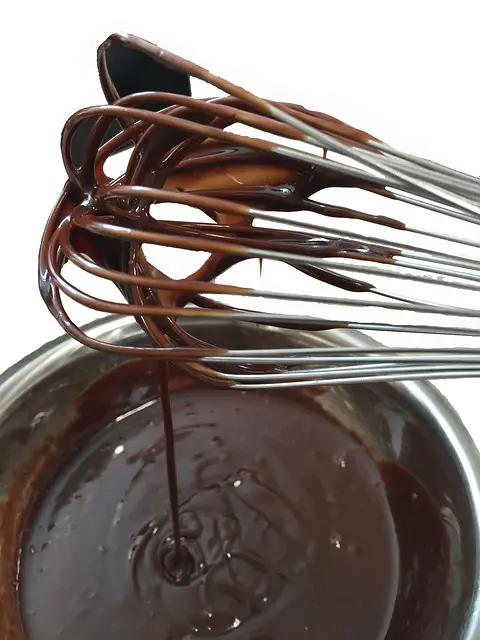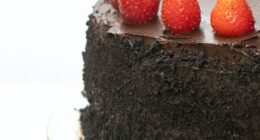Chocolate is a finished product for eating, while cooking chocolate has higher cocoa content, no added sugar, and is specifically formulated for baking.
Did you know that the choice of chocolate can make or break your baking recipe? Whether you’re a seasoned baker or just starting out, understanding the differences between chocolate and cooking chocolate is essential for whipping up delicious treats. From the sugar content to the cocoa solids, these variations can have a significant impact on the taste and texture of your desserts. Let’s delve into the world of chocolate and explore the nuances that set cooking chocolate apart from regular eating chocolate.
Key Takeaways:
- Cooking chocolate, also known as baking chocolate, has a higher percentage of cocoa solids and no added sugar.
- Regular eating chocolate contains added sugar and other ingredients like milk or fruit.
- Baking chocolate provides a more intense and bitter taste, making it ideal for those who prefer less sweet chocolate.
- Cooking chocolate is often considered healthier than eating chocolate due to its lower sugar content and fewer additives.
- While normal eating chocolate can be used as a substitute for baking chocolate, adjustments in the sugar content may be necessary.
What is Cooking Chocolate?
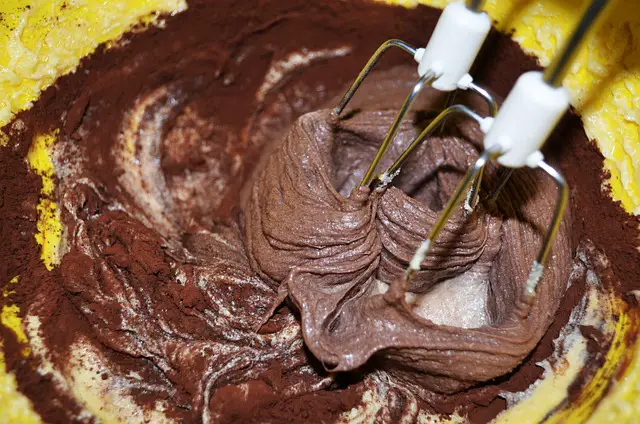
Cooking chocolate, also referred to as baking chocolate, is a versatile ingredient used in various culinary applications. It is specifically designed for baking and cooking recipes, offering unique characteristics that set it apart from regular eating chocolate.
Unlike eating chocolate, cooking chocolate is made primarily from cocoa solids and cocoa butter, with minimal added sugar. This gives it a more intense, rich, and pure chocolate flavor. Available in milk, white, and dark varieties, cooking chocolate comes in the form of blocks or chips, making it easy to measure and melt.
The higher concentration of cocoa solids in cooking chocolate contributes to its distinct taste and texture. The cocoa solids provide depth and complexity, while the cocoa butter adds creaminess and smoothness. By using cooking chocolate in recipes, bakers and cooks have greater control over the sweetness and overall flavor of their creations.
Below is a table showcasing the typical composition of cooking chocolate compared to regular eating chocolate:
| Cocoa Solids | Cocoa Butter | Sugar | |
|---|---|---|---|
| Cooking Chocolate | Higher percentage | Significant percentage | Minimal |
| Eating Chocolate | Lower percentage | Significant percentage | Higher amount |
This table highlights the fundamental differences in the composition of cooking chocolate and eating chocolate, emphasizing the higher cocoa solids content and lower sugar content found in cooking chocolate.
Overall, cooking chocolate is a must-have ingredient for anyone who enjoys baking and cooking with chocolate. Its distinct flavor profile and flexibility make it an essential component in a wide range of recipes, from classic chocolate cakes and cookies to delicious ganaches and decadent desserts.
Can I Eat Baking Chocolate?
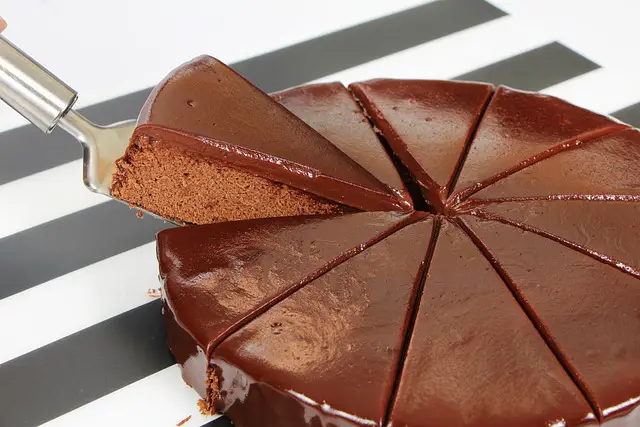
Baking chocolate, also known as unsweetened chocolate or cooking chocolate, is safe to eat, although it may not be as enjoyable as eating chocolate for some people. Unlike eating chocolate, baking chocolate does not have added sugar, which makes it taste more intense and bitter. However, individuals who prefer less sweet chocolate may actually appreciate the distinct taste of baking chocolate.
If you want to eat baking chocolate and find the bitterness overwhelming, there are ways to make it more palatable. One option is to melt the baking chocolate and add sugar and milk to create a sweeter and creamier texture. This can help balance out the intense flavors and make it more enjoyable as an eating chocolate substitute.
Comparison: Baking Chocolate vs. Eating Chocolate
| Baking Chocolate | Eating Chocolate |
|---|---|
| No added sugar | Contains added sugar |
| More intense and bitter taste | Varies in sweetness depending on the type |
| Higher cocoa content | May contain lower cocoa content |
| Used for baking and cooking | Enjoyed as a snack |
While baking chocolate can be eaten, it is commonly used in baking and cooking recipes because of its unique properties. By understanding the differences between baking and eating chocolate, you can make informed choices when it comes to selecting the right type of chocolate for your culinary endeavors.
Is Cooking Chocolate Healthier?
Cooking chocolate is often seen as a healthier choice than eating chocolate because it usually has less sugar and fewer additives. This lower sugar content makes it a good option for those watching their sugar intake or with dietary restrictions. Plus, cooking chocolate has more cocoa solids, which are rich in antioxidants and offer health benefits.
Another advantage of cooking chocolate is its simplicity. It typically contains fewer additives compared to eating chocolate, giving you a purer chocolate experience. However, it’s important to check the labels to ensure you’re getting a high-quality product without unwanted additives like coconut or palm oil. Opting for top-notch cooking chocolate can provide a cleaner and more nutritious option for your baking and cooking needs.
Comparison of Cooking Chocolate and Eating Chocolate:
| Cooking Chocolate | Eating Chocolate | |
|---|---|---|
| Sugar Content | Lower | Higher (added sugar) |
| Cocoa Solids | Higher | Varies depending on the type |
| Additives | Minimal | May contain additional ingredients |
| Flavor | Bitter to intense chocolate taste | Sweeter, milder, and varied flavors |
Can I Use Normal Chocolate for Baking?
Yes, you can use regular eating chocolate for baking, but there are some adjustments to consider. Since eating chocolate already has added sugar, you’ll need to reduce the sugar called for in the recipe to balance the sweetness. This ensures your baked goods don’t become overly sweet.
Normal chocolate bars are great for covering cakes or muffins, providing a smooth, chocolatey coating when melted. However, for technical tasks like tempering or cake coverings, it’s best to use baking chocolate designed for these purposes. Baking chocolate has a higher cocoa butter content, aiding in tempering and achieving a shiny finish, unlike regular chocolate, which may not yield the desired results for such applications.
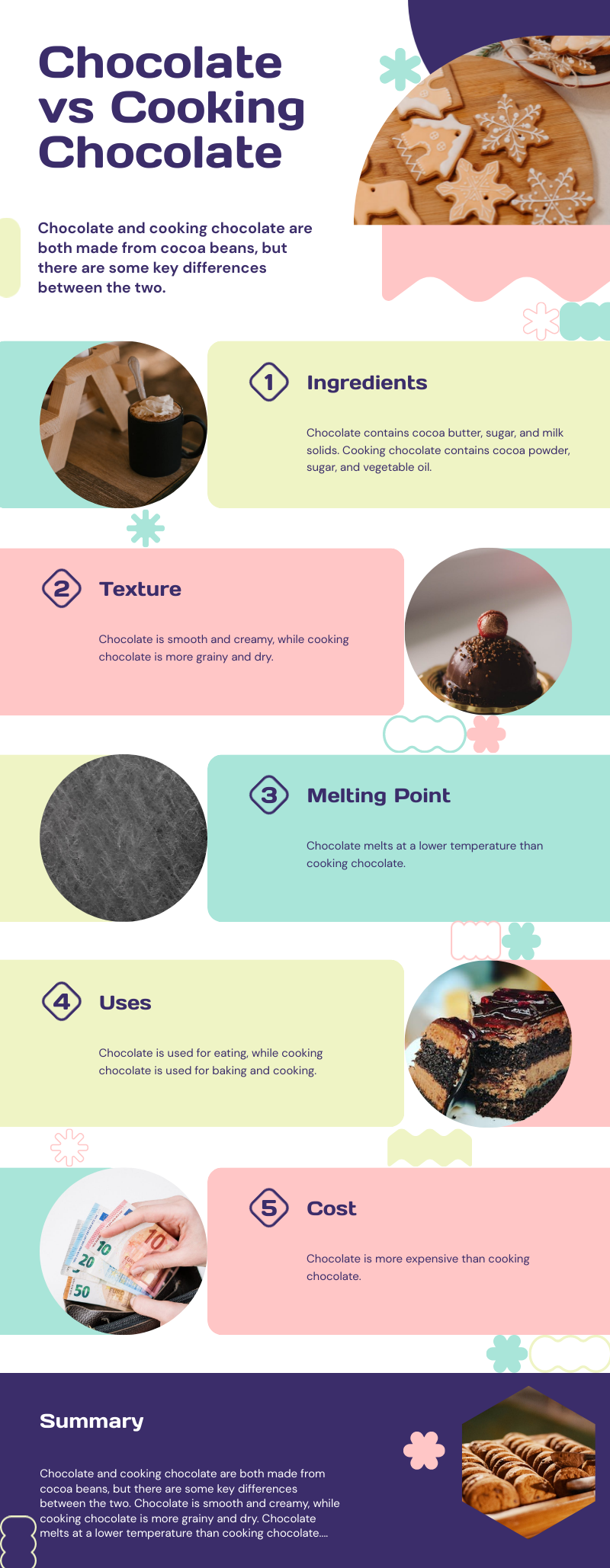
Substituting Normal Chocolate for Baking Chocolate
Here’s a simple guide to help you substitute normal chocolate for baking chocolate:
| Type of Chocolate | Substituting Ratio |
|---|---|
| Bittersweet/Dark Chocolate | 1 ounce of normal chocolate = 1 ounce of baking chocolate |
| Semi-sweet Chocolate | 1 ounce of normal chocolate = 1 ounce of baking chocolate |
| Milk Chocolate | 1 ounce of normal chocolate = 1 ounce of baking chocolate |
| White Chocolate | Not recommended as a direct substitute due to differences in fat content |
Remember to adjust the sugar content accordingly and enjoy experimenting with different types of normal chocolate in your baking creations!
Can Baking Chocolate be Tempered?
Using regular eating chocolate in baking is possible, but adjustments are needed due to its added sugar content. It’s essential to reduce the sugar in the recipe to prevent the baked goods from becoming too sweet.
Normal chocolate bars are suitable for coating cakes or muffins, creating a smooth chocolatey layer when melted. However, for tasks like tempering or cake coverings requiring precision, it’s recommended to use baking chocolate. Baking chocolate contains more cocoa butter, helping with tempering and achieving a glossy finish, which regular chocolate may not accomplish effectively.
Comparison of Baking Chocolate and Tempering Chocolate
Below is a comparison between baking chocolate and tempering chocolate, highlighting their differences in cocoa butter content and suitability for tempering:
| Aspect | Baking Chocolate | Tempering Chocolate |
|---|---|---|
| Cocoa Butter Content | Lower | Higher |
| Suitability for Tempering | Challenging without additional cocoa butter | Designed specifically for tempering |
| Availability | Widely available in grocery stores | Available from specialty chocolate suppliers |
| Cost | More affordable | Slightly higher cost due to quality and purpose |
As seen in the comparison above, despite the possibility of tempering baking chocolate, using chocolate specifically designed for tempering provides more consistent and reliable results. It eliminates the need for additional cocoa butter and ensures a smoother and more successful tempering process.
Can You Use Cooking Chocolate for Ganache?
When it comes to making ganache, cooking chocolate can be a suitable choice. By adding fats like butter or cream, you can create a rich and luscious ganache with a chocolatey taste. While ganache made with cooking chocolate may not have the same glossy appearance as tempered ganache, it still delivers a delicious and satisfying flavor.
Dark cooking chocolate is often preferred for making ganache due to its intense cocoa flavor. However, the choice of chocolate can vary depending on personal preference. Some bakers may opt for milk or white cooking chocolate to create a different taste profile. It’s all about finding the right balance of flavors for your desired outcome.
Tips for Using Cooking Chocolate in Ganache:
- Choose high-quality cooking chocolate with a high cocoa content for the best results.
- Experiment with different fats like butter, cream, or coconut oil to achieve the desired consistency and flavor.
- While ganache made with cooking chocolate may not have the same sheen as tempered ganache, it will still provide a smooth texture and creamy taste.
- Consider adding a touch of salt or a splash of vanilla extract to enhance the overall flavor of your ganache.
To give you a better idea of the different options when it comes to cooking chocolate for ganache, take a look at the following table:
| Cooking Chocolate | Cocoa Content | Sugar Content | Recommended Use |
|---|---|---|---|
| Dark Cooking Chocolate | 50-70% | Minimal | Rich and intense ganache |
| Milk Cooking Chocolate | 20-30% | Moderate | Milder and sweeter ganache |
| White Cooking Chocolate | 0% | Moderate to high | Delicate and creamy ganache |
As you can see, the choice of cooking chocolate for ganache depends on the flavor profile you want to achieve. Dark cooking chocolate offers a more intense chocolate taste, while milk and white cooking chocolate provide a milder and sweeter option.
Is Cooking Chocolate Gluten-Free/Vegan/Dairy-Free?
When it comes to dietary restrictions, cooking chocolate can be a great option. Depending on the brand and ingredients used, it can be naturally gluten-free, vegan, and dairy-free.
High-quality cooking chocolate tends to have fewer ingredients and often contains only cocoa solids, cocoa butter, and a small amount of sugar. This simplicity makes it a suitable choice for those with specific dietary needs.
Gluten-Free Cooking Chocolate
If you have a gluten intolerance or follow a gluten-free diet, cooking chocolate can be a safe indulgence. The absence of gluten-containing ingredients in cooking chocolate ensures it won’t trigger any adverse reactions for individuals with gluten sensitivities or celiac disease.
Vegan Cooking Chocolate
For those who follow a vegan lifestyle, cooking chocolate can be a delicious treat. Vegan cooking chocolate excludes any animal-derived ingredients, such as milk, dairy, or honey, making it suitable for vegans to enjoy in their baking creations.
Dairy-Free Cooking Chocolate
Cooking chocolate can be an excellent option for individuals who are lactose intolerant or have dairy allergies. Many brands of cooking chocolate do not include milk or whey in their ingredients, making them a dairy-free alternative for baking.
When shopping for cooking chocolate, it is important to read the labels carefully. Some brands may still include milk or other dairy products in their cooking chocolate, so it’s essential to choose brands specifically labeled as gluten-free, vegan, or dairy-free to ensure they meet your dietary requirements.
What is the Best Baking Chocolate?
When it comes to baking chocolate, two standout brands are Callebaut and Belcolade, known for their quality and flavor. Callebaut, a Belgian chocolate manufacturer, offers a wide range of products, including the popular “Callets” range, known for easy melting and excellent flavor. Belcolade, another respected Belgian brand, prioritizes flavor, consistency, and sustainability, making it a top choice for professional bakers.
While budget-friendly options exist in supermarkets, the quality may not match specialized brands like Callebaut and Belcolade. These brands focus on expertise and quality control, ensuring superior results in baked goods. Investing in high-quality baking chocolate can significantly enhance the taste and overall experience of your baked treats.
Understanding Types of Baking Chocolate
Baking chocolate comes in various forms, each with its own unique characteristics and uses in the kitchen. Whether you’re a professional pastry chef or an aspiring home baker, it’s important to know the differences between these types of baking chocolate to achieve the desired flavors and textures in your creations.
Unsweetened Chocolate
Unsweetened baking chocolate, also known as pure chocolate or cocoa liquor, is made from 100% chocolate with no added sugar. It has a strong and intense cocoa flavor and is the purest form of chocolate available. Commonly used as a base for other chocolate varieties, unsweetened chocolate is ideal for recipes where you want to control the sweetness yourself.
Bittersweet Chocolate
Bittersweet baking chocolate contains varying amounts of sugar and chocolate, with a higher cocoa content than most other types. It has a rich, deep flavor that balances bitterness and sweetness. Bittersweet chocolate is an excellent choice for recipes that call for a more pronounced chocolate taste.
Semi-Sweet Chocolate
Semi-sweet chocolate is similar to bittersweet chocolate but typically has a slightly lower cocoa content and a touch more sweetness. It is a versatile option, widely used in a variety of baking applications, including cookies, brownies, and cakes.
Milk Chocolate
Milk chocolate is the sweetest and mildest of all the baking chocolate varieties. It is made by adding milk solids and sugar to the chocolate mixture, resulting in a creamy and smooth texture. Milk chocolate is commonly used in recipes where a mild and indulgent chocolate flavor is desired.
German’s Sweet Chocolate
German’s Sweet Chocolate is not a type of chocolate on its own but rather a specific brand of sweetened baking chocolate. It is known for its unique flavor and is often used in traditional German chocolate cake recipes. German’s Sweet Chocolate contains sugar, cocoa butter, chocolate liquor, and flavorings.
Chocolate Chips
While chocolate chips are a popular ingredient in baking, it’s important to note that they are not the same as baking chocolate. Chocolate chips are designed to hold their shape during baking, which is achieved by adding ingredients like stabilizers and emulsifiers. They are available in different varieties, including milk chocolate, semi-sweet, and dark chocolate chips.
To summarize, the type of baking chocolate you choose will depend on the specific recipe and flavor profile you want to achieve. Whether it’s the bold intensity of unsweetened chocolate, the rich complexity of bittersweet, or the smooth sweetness of milk chocolate, there’s a baking chocolate out there to suit every taste and craving.
Can I Bake with Candy Bars?
When considering baking with candy bars, it’s essential to understand that they aren’t tailored for baking like specialized baking chocolate. While they may share similar cacao percentages, candy bars often contain additional ingredients like nougat, nuts, or caramel, which can alter the texture and flavor of your desserts.
Using candy bars in baking may lead to inconsistent melting and distribution, affecting the overall quality of your baked goods. For optimal results, it’s recommended to use baking chocolate specifically formulated for baking. Baking chocolate offers better control over taste and texture due to its higher cocoa solids content and fewer added ingredients, ensuring a more consistent and delicious outcome.
Conclusion
Understanding the differences between cooking chocolate and regular eating chocolate is essential for successful baking. Cooking chocolate, also known as baking chocolate, contains a higher percentage of cocoa and less sugar, resulting in a more intense chocolate flavor. It allows bakers to have better control over the sweetness of their creations, making it ideal for recipes where the chocolate taste is paramount. On the other hand, regular eating chocolate is formulated with added sugar and other ingredients, making it better suited for snacking or as an indulgent treat.
By choosing the right type of chocolate for each recipe, bakers can achieve the desired taste and texture in their baked goods. Whether it’s the deep and rich flavor of dark chocolate, the creaminess of milk chocolate, or the balance of semi-sweet chocolate, the selection of chocolate can greatly impact the final result. Additionally, understanding the range of chocolate types available, such as unsweetened, bittersweet, or German’s sweet chocolate, allows for further customization in recipes.
FAQ
What’s the difference between chocolate and cooking chocolate?
The difference lies in the amount of sugar and cocoa content. Cooking chocolate, also known as baking chocolate, is unsweetened and has a higher percentage of cocoa solids. Eating chocolate, on the other hand, contains added sugar and other ingredients like milk or fruit.
What is cooking chocolate?
Cooking chocolate, also referred to as baking chocolate, is made from cocoa solids and cocoa butter. It comes in blocks or chips and is available in milk, white, and dark varieties. Cooking chocolate typically has a higher cocoa solids content and lower sugar content compared to regular eating chocolate. It is used in baking and cooking recipes, allowing the baker to control the sweetness of the final product.
Can I eat baking chocolate?
Baking chocolate is safe to eat, but it may not be as enjoyable as eating chocolate for some people. Baking chocolate has a more intense and bitter taste due to the lack of added sugar. Individuals with a preference for less sweet chocolate may actually prefer the taste of baking chocolate. However, if using baking chocolate for a quick chocolate fix, it can be melted with sugar and milk to make it more palatable.
Is cooking chocolate healthier?
Cooking chocolate can be considered healthier than eating chocolate due to its lower sugar content, higher cocoa solids, and fewer additives. However, it’s important to read the labels as some baking chocolate may contain additives such as coconut or palm oil. High-quality baking chocolate with a higher cocoa solids percentage can provide a purer taste and allow for control over the type of sweetener used.
Can I use normal chocolate for baking?
Normal eating chocolate can be used as a substitute for baking chocolate in most recipes. However, it’s important to adjust the sugar content in the recipe as eating chocolate already contains added sugar. Normal chocolate bars are also commonly used for covering cakes and muffins or in other baking recipes. For technical applications like tempering or cake coverings, baking chocolate specifically designed for that purpose is recommended.
Can baking chocolate be tempered?
Baking chocolate is not ideal for tempering unless it is specifically labeled as “coverture” or “covering” chocolate. Tempering requires precise control of cocoa butter crystallization, which is difficult with baking chocolate due to its lower cocoa butter content. While it is possible to temper baking chocolate with separate cocoa butter pellets, it is often easier and more cost-effective to use chocolate specifically designed for tempering.
Can you use cooking chocolate for ganache?
Cooking chocolate can be used for making ganache by adding fats like butter or cream. While the ganache made with cooking chocolate may not have the same glossy appearance as tempered ganache, it will still have a rich and chocolatey taste. Dark cooking chocolate is often preferred for making ganache, but the choice of chocolate can vary depending on personal preference.
Is cooking chocolate gluten-free/vegan/dairy-free?
Depending on the brand and ingredients used, cooking chocolate can be naturally gluten-free, vegan, and dairy-free. High-quality cooking chocolate tends to have fewer ingredients and often contains only cocoa solids, cocoa butter, and a small amount of sugar. It’s important to check the labels, as some brands may include milk or whey in their cooking chocolate.
What is the best baking chocolate?
Callebaut and Belcolade are highly regarded brands for baking chocolate, known for their quality and flavor. Callebaut offers a range of chocolate products, including their popular “Callets” range that makes tempering easier. Belcolade is also a respected Belgian chocolate manufacturer. While supermarket own-brand baking chocolate may be more affordable, the quality may not be on par with these specialized brands.
Understanding types of baking chocolate?
Baking chocolate comes in various forms, including unsweetened, bittersweet, semi-sweet, milk chocolate, and German’s sweet chocolate. Unsweetened baking chocolate is 100% chocolate with no added sugar and has a strong cocoa flavor. Bittersweet and semi-sweet baking chocolate contain varying amounts of sugar and chocolate, with bittersweet having a higher cocoa content. Milk chocolate is milder in flavor and contains added sugar and cocoa butter. German’s sweet chocolate is a specific brand of sweetened chocolate, often used in German chocolate cake. Chocolate chips are not the same as baking chocolate and contain additional ingredients for shape stability.
Can I bake with candy bars?
While chocolate bars found in the candy aisle may have similar cacao percentages to baking chocolate, they often contain additional ingredients and are not specifically designed for baking. These chocolate bars are better suited for snacking rather than baking as they may affect the texture and results of desserts. It’s recommended to use baking chocolate for optimal baking results.
Source Links
- https://harshchocolates.com/blogs/news/the-differences-between-cooking-and-normal-chocolate
- https://www.hotelchocolat.com/uk/blog/food+drink/everything-you-need-to-know-about-cooking-with-chocolate.html
- https://www.southernliving.com/food/desserts/chocolate/baking-chocolate-vs-regular-chocolate
Image Credits
Featured Image By – 5671698 from Pixabay
Image 1 By – PublicDomainPictures from Pixabay
Image 2 By – Varintorn Kantawong from Pixabay
